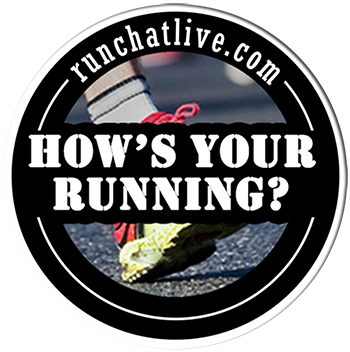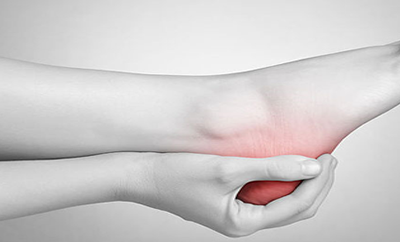Post Run Stretching – Try Some HELP.

There is a lot of information out there for runners regarding what we should and shouldn’t do in our warm up, and as you can see in our ‘Runchatlive Runners Guide To Warm Up‘, a lot of it is not supported by evidence. When it comes to what we should do after our run, the evidence becomes even thinner!
We all obviously want to reduce next day soreness and recover as best as possible before our next run, so should we be stretching? Would foam rolling help? Is there anything else we could be doing?
Static Stretch Post Run
Many runners perform static stretching after a run in the belief that it will:
- reduce the amount of post exercise soreness (DOM’s)
- reduce the risk of future injury
It may come as a surprise to hear that there is actually very little research to support either of these beliefs. Yes, some runners do indeed experience increased post exercises soreness if they fail to stretch after a run but many others are surprised to discover that if they miss out their normal post run static stretching, they actually experience less soreness!
Looking at the physiology, after a fairly demanding run it is very normal for some of the major muscle groups to have micro-tears; it’s normal – it’s how we get stronger. Trying to force these muscles to lengthen by static stretching could lead to more soreness. The whole idea of static stretching increasing the length of a muscle is up for debate anyway, as any increases in range of movement we do see are more likely to be the result of a temporary release permitted by the nervous system.
It is highly likely that post exercise soreness is the product of either failing to warm up properly or simply carrying out a too strenuous training session. By the time you start your post run cool down, there is very little you can do to avoid it.
H.E.L.P.
There are a few things you can do which are likely to help you recover more quickly than just doing static stretching. The acronym H.E.L.P serves to help you remember them. It may not work for everybody but in my experience it can be a very physically and mentally rewarding way of ending your runs:
Though the need for constant water during a run has been exaggerated over the years, replenishing water you have lost after the run is something too many runners forget to do. Before you know it, you are back at work, two hours have passed and you still haven’t returned fluids to the body. So the first thing to do after a run is hydrate by having a drink! If you have sweat a lot, consider a sports drink as they contain more key electrolytes like sodium, calcium, magnesium, potassium and phosphate as well as carbohydrates and are absorbed into the bloodstream quicker than water. Chocolate milk has become very popular recently too, with some studies suggesting that a combination of carbohydrate and protein can serve you well after a strenuous workout. If neither of those is available, just have some water.
Though you may be shattered (or need to get back home a.s.a.p.). force yourself to spend a few minutes having an easy walk. Relax your body, change directions, walk in a figure of eight… it will allow your heart rate to fall gradually and your system to slowly return to base level. Too many runners either collapse into a heap on the floor or jump straight back into the car. What the body actually needs is a little gentle movement a chance to gradually return to base state.
You’ve walked for a few minutes, you’re chilled out, so now lie down. By doing so, you are now more likely to spend a few quality minutes to continue your cool down. Take this moment to congratulate yourself and recognise the effort you have just made. Every run is better than staying at home (unless of course you are over-training) and it is important to finish each run on a positive note.
Research has shown that gently ‘pumping’ the joints may encourage the flow of waste products out and fresh fluid in. Whilst lying on your back, take 5 minutes to work all the joints from the ankles to the neck, gently ‘opening and closing’ them or ‘making circles’. There is no right or wrong way to do this; just imagine you are pumping water in and out in a slow, relaxed manner. You’ll be surprised how relaxing it can actually be!
So there you have it. If static stretching after your run works for you then great, keep it up. But you may be surprised to discover that you might recover better without it! Try some H.E.L.P. after your next few runs and let us know how you feel. Does it affect how sore you get? Does it help your recovery? We look forward to hearing from you!
Related Posts
How to Breathe when Running
The question of ‘how to breathe when running’ is one that many runners find themselves pondering, especially those new to running or starting to experiment with more intense sessions like sprint or hill intervals. Should we breathe through the mouth or nose? Is there a particular rhythm or technique we should be using?
Cadence Testing Brighton Marathon
Cadence when running refers to how many times the feet touch the ground per minute. Some schools of running suggest all runners shoud run at the same cadence, but is this supported ny research? Can reducing or increasing cadence help reduce running injury and increase performance?
Plantar Fasciitis: The Do’s & Don’ts
Of all the aches and pains suffered by runners, pain on the heel or sole of the foot is one of the most common – so common in fact that most sufferers find it simple to remember its Latin name: ‘Plantar Fasciitis’. What’s not so simple however is how to recover from it.





0 Comments